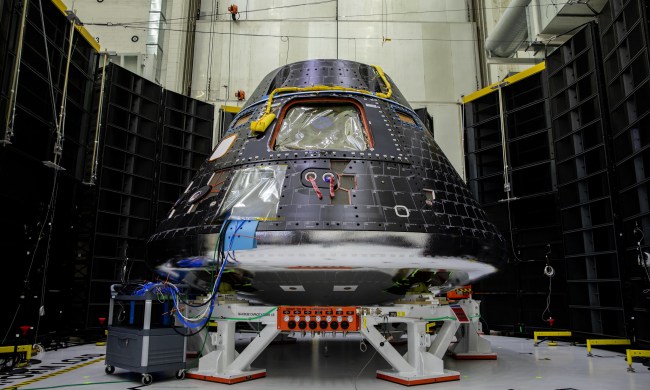NASA’s Ingenuity Mars helicopter made history in April 2021 when it became the first aircraft to achieve powered, controlled flight on another planet.
With Mars’ atmosphere much thinner than Earth’s, engineers at NASA’s Jet Propulsion Laboratory (JPL) weren’t certain if they could build a machine capable of obtaining lift on the red planet, let alone creating one able to fly reliably. But with its long, fast-spinning blades, Ingenuity has exceeded expectations, flying over long distances during multiple flights.
Since its first flight, the 4 pound, 19-inch-high helicopter has flown a further 20 times, traveling as far as 625 meters in a single trip, reaching altitudes as high as 12 meters, and zipping over the martian surface at speeds of up to 5 meters per second.
With Ingenuity showing no signs of mechanical decline, JPL has just announced that it’s extending the flight operations of the plucky copter through September, a fabulous development that puts it on a path toward “setting more records,” the team said.
JPL has recently made several adjustments to Ingenuity’s flight software that will now allow it to fly higher and also to change airspeed as it flies. Future software upgrades could include adding terrain elevation maps into the navigation filter and a landing-hazard-avoidance capability, JPL said.
Looking ahead, JPL says Ingenuity’s new area of operations will be “entirely different from the modest, relatively flat terrain it has been flying over since its first flight last April.”
It means that in the coming months the aircraft will be taking on an ancient river delta in Jezero Crater, using its onboard camera to identify areas of interest that NASA’s Perseverance rover can explore in search of evidence of past microbial life on the distant planet.
“Several miles wide and formed by an ancient river, the fan-shaped delta rises more than 130 feet (40 meters) above the crater floor,” JPL said. “Filled with jagged cliffs, angled surfaces, projecting boulders, and sand-filled pockets that could stop a rover in its tracks (or upend a helicopter upon landing), the delta promises to hold numerous geologic revelations — perhaps even the proof necessary to determine that microscopic life once existed on Mars billions of years ago.”
Commenting on Ingenuity’s success, Thomas Zurbuchen, the associate administrator of NASA’s Science Mission Directorate, said: “Less than a year ago, we didn’t even know if powered, controlled flight of an aircraft at Mars was possible. Now, we are looking forward to Ingenuity’s involvement in Perseverance’s second science campaign. Such a transformation of mindset in such a short period is simply amazing, and one of the most historic in the annals of air and space exploration.”
It hasn’t all been smooth sailing for Ingenuity, however, with JPL engineers having to remotely solve a number of technical issues experienced by the drone-like flying machine. Still, overcoming the problems from so far away is testament to Ingenuity’s amazing design, and gives JPL a great deal of hope as it considers more advanced aircraft designs for future Mars missions.


